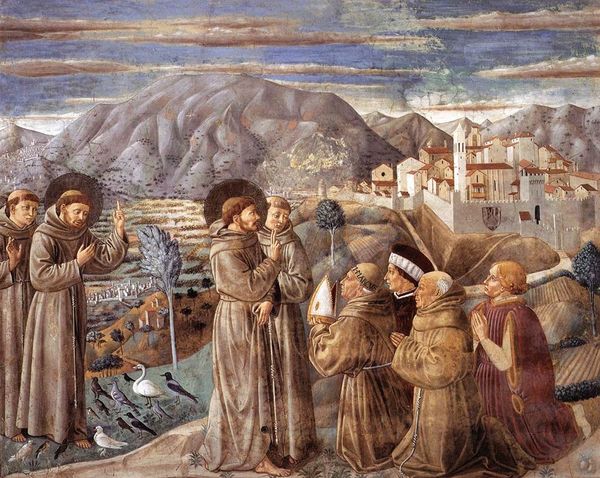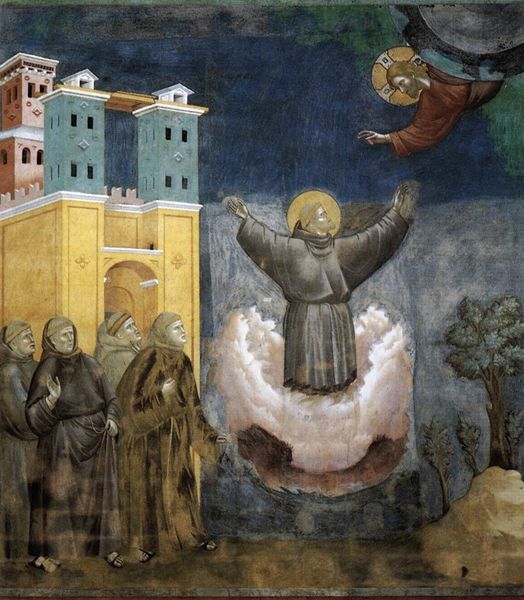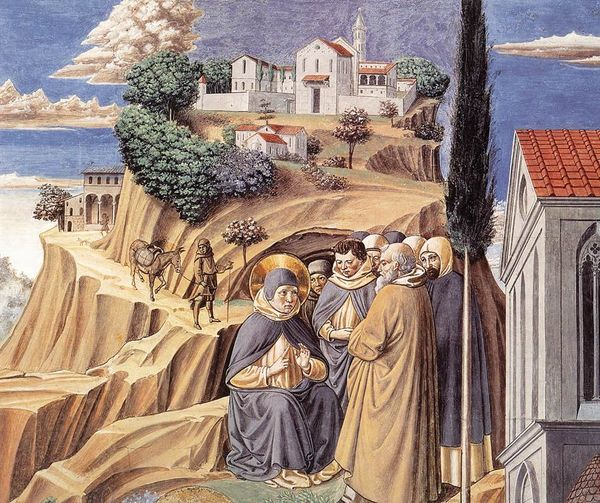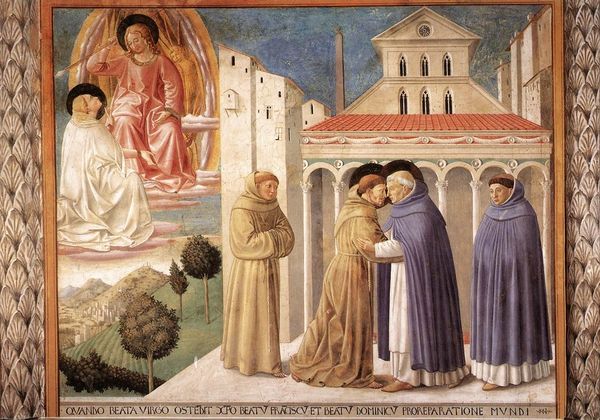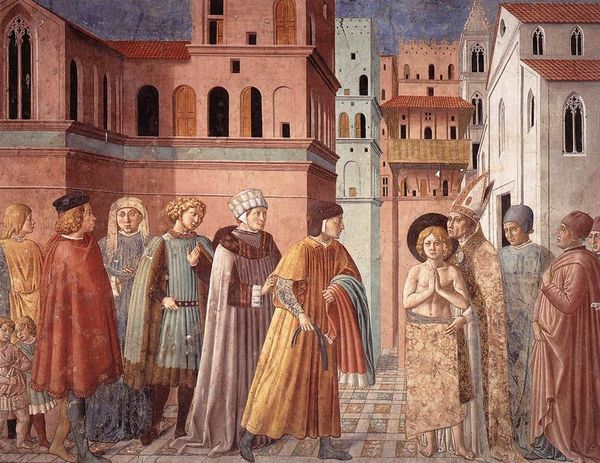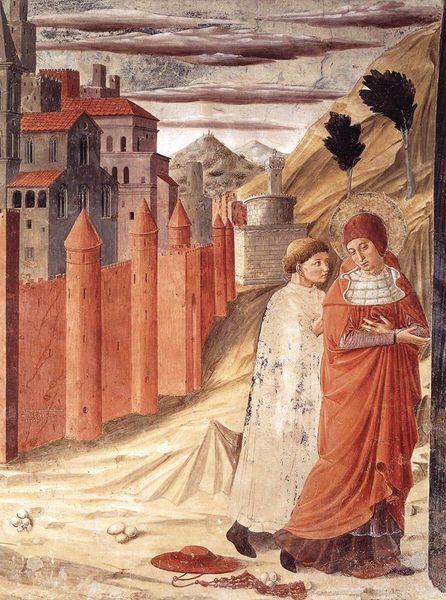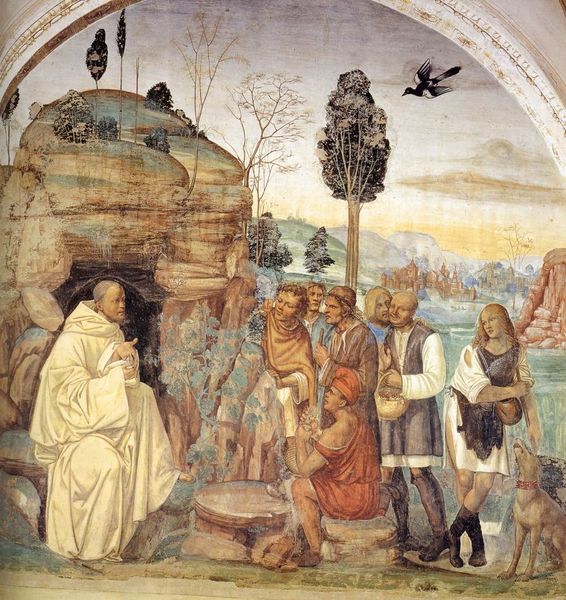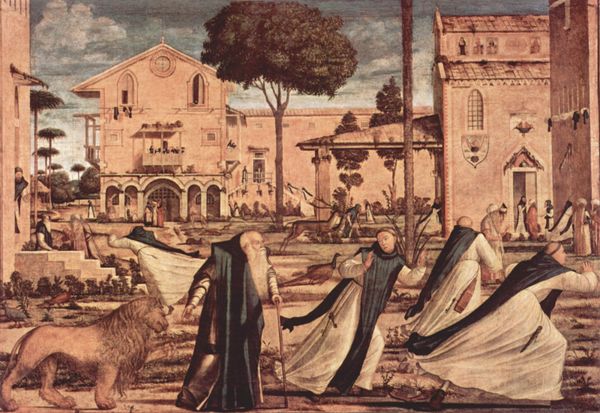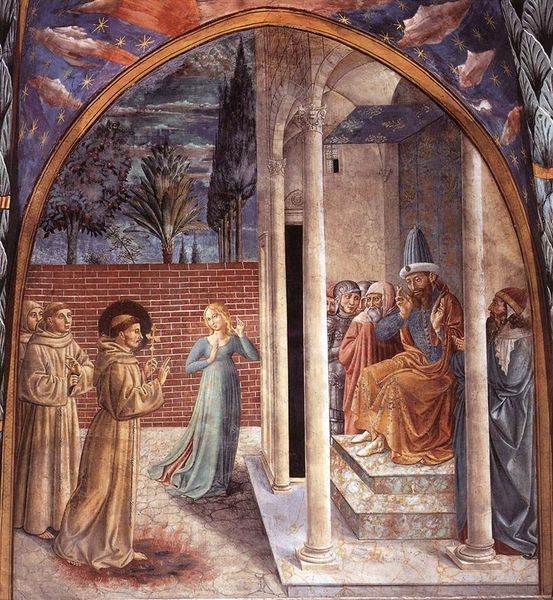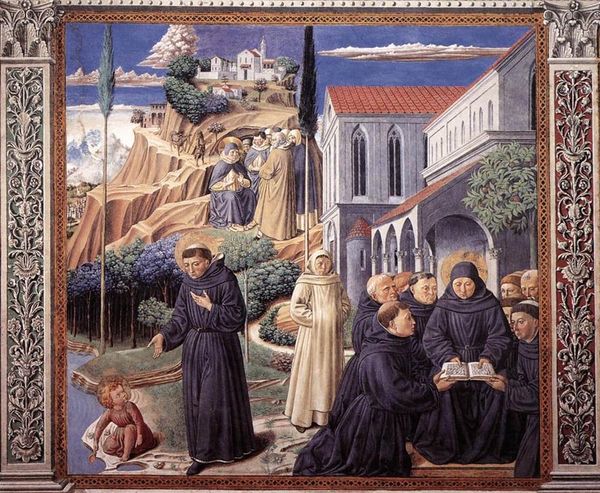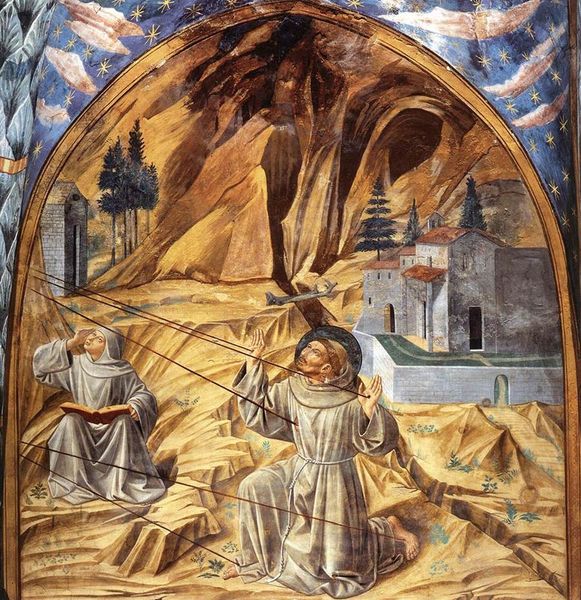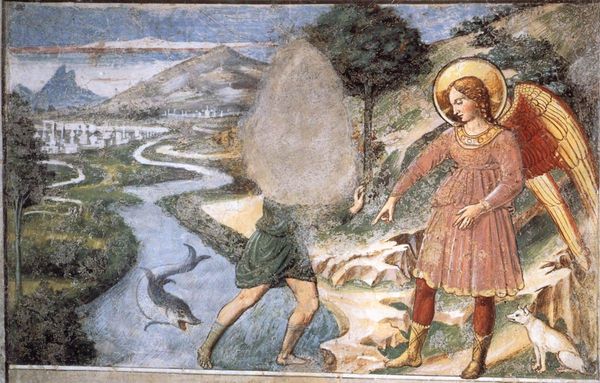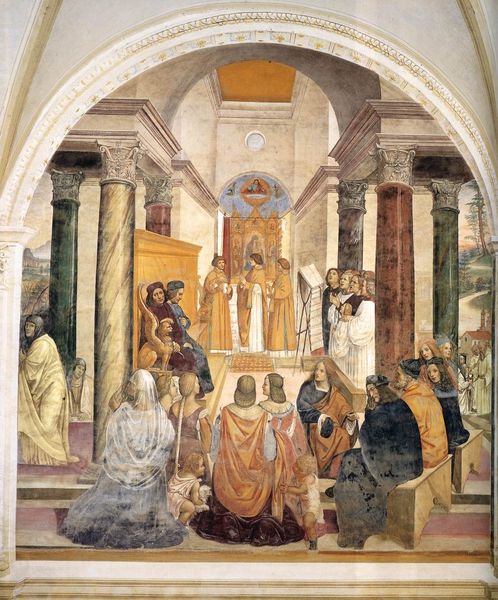
tempera, fresco
#
medieval
#
narrative-art
#
tempera
#
landscape
#
figuration
#
fresco
#
oil painting
#
christianity
#
men
#
painting painterly
#
cityscape
#
history-painting
#
italian-renaissance
Dimensions: 220 x 270 cm
Copyright: Public domain
Editor: Here we have Benozzo Gozzoli’s “The Expulsion of the Devils from Arezzo,” painted in tempera as a fresco in 1452. It's striking how he contrasts the earthly, almost serene landscape with the chaos of the devils swirling above the city. What sociopolitical currents do you think influenced the artwork’s message and intent? Curator: It's important to view this fresco within the context of fifteenth-century Italy, where the church wielded significant influence, not only spiritually but politically. Gozzoli, as a product of his time, was undoubtedly aware of the social role of religious art. But consider the devils. What do they represent beyond a literal interpretation of evil? Editor: Well, they disrupt the order, right? And that order is represented by the monks, the Church, the city itself... Curator: Precisely! Now, think about Arezzo in that era. What socio-economic tensions might have been present? Who might have felt "expelled" or marginalized by the ruling structures? Editor: Maybe the rising merchant class pushing against the old nobility? Or those challenging Church doctrines? Perhaps this expulsion mirrors the silencing of dissenting voices, framing them as 'devils' threatening social stability. Curator: Exactly! It's also about visual rhetoric. Notice the idealized depiction of the city versus the grotesque portrayal of the devils. Who gets to define what is 'good' or 'evil', and who benefits from that definition? It's crucial to critically examine these power dynamics reflected in the art. Editor: So it's not just a religious scene, but a reflection of the anxieties and power struggles within Florentine society. Thanks, I never would have thought about it that way. Curator: Art constantly negotiates the realities of its time; and even the fantastical contains truth. Hopefully now, by examining this fresco, others can reflect on that history and on the contemporary world.
Comments
No comments
Be the first to comment and join the conversation on the ultimate creative platform.
